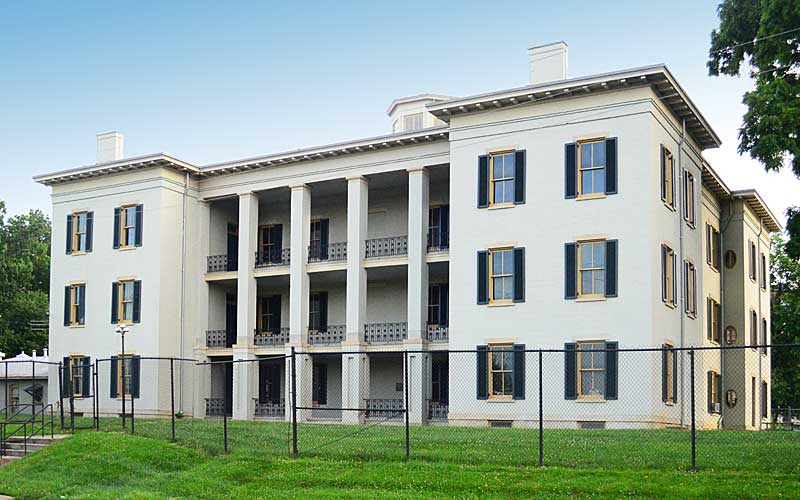U.S. Marine Hospital

In 1837, Congress authorized the construction of the U.S. Marine Hospital in Louisville “for the benefit of sick seamen, boatmen, and other navigators on the western rivers and lakes.” In the parlance of the day, “western rivers and lakes” referred to the Ohio and Mississippi river systems and the Great Lakes.
In the 1840s, steamboats dominated river traffic and were the major factor in the growth and development of industry. Construction of the hospital began in 1845, but wasn’t completed until 1852.
The hospital’s site, midway between the Louisville and Portland wharves, was selected for the “beneficial effect of a view of the water, and the impressions and associations it would naturally awake in the minds of men whose occupation were so intimately connected with it.”
The boatmen served by the hospital worked difficult and dangerous jobs. Injuries due to engine or boiler explosions, wrecks, collisions with river snags, and freight handling, were common. Exposure to extremes of temperature, from the sub-tropic heat of the Mississippi delta to the frigid cold of the Great Lakes, claimed victims.
Diseases affecting the boatmen included yellow fever, cholera, smallpox and malaria. While docked in the rough port towns of the time, violence, alcoholism, and social diseases sent many boatmen to the marine hospitals.
All classifications of river workers, including pilots, captains, cooks, pursers, engineers, stevedores, roustabouts and deckhands, were eligible for treatment and care. An estimated one-third of the patients were African-Americans.
The Marine Hospital Service was the genesis of America’s modern health care system and is responsible for major improvements in research, hygiene and science-based medical treatment.